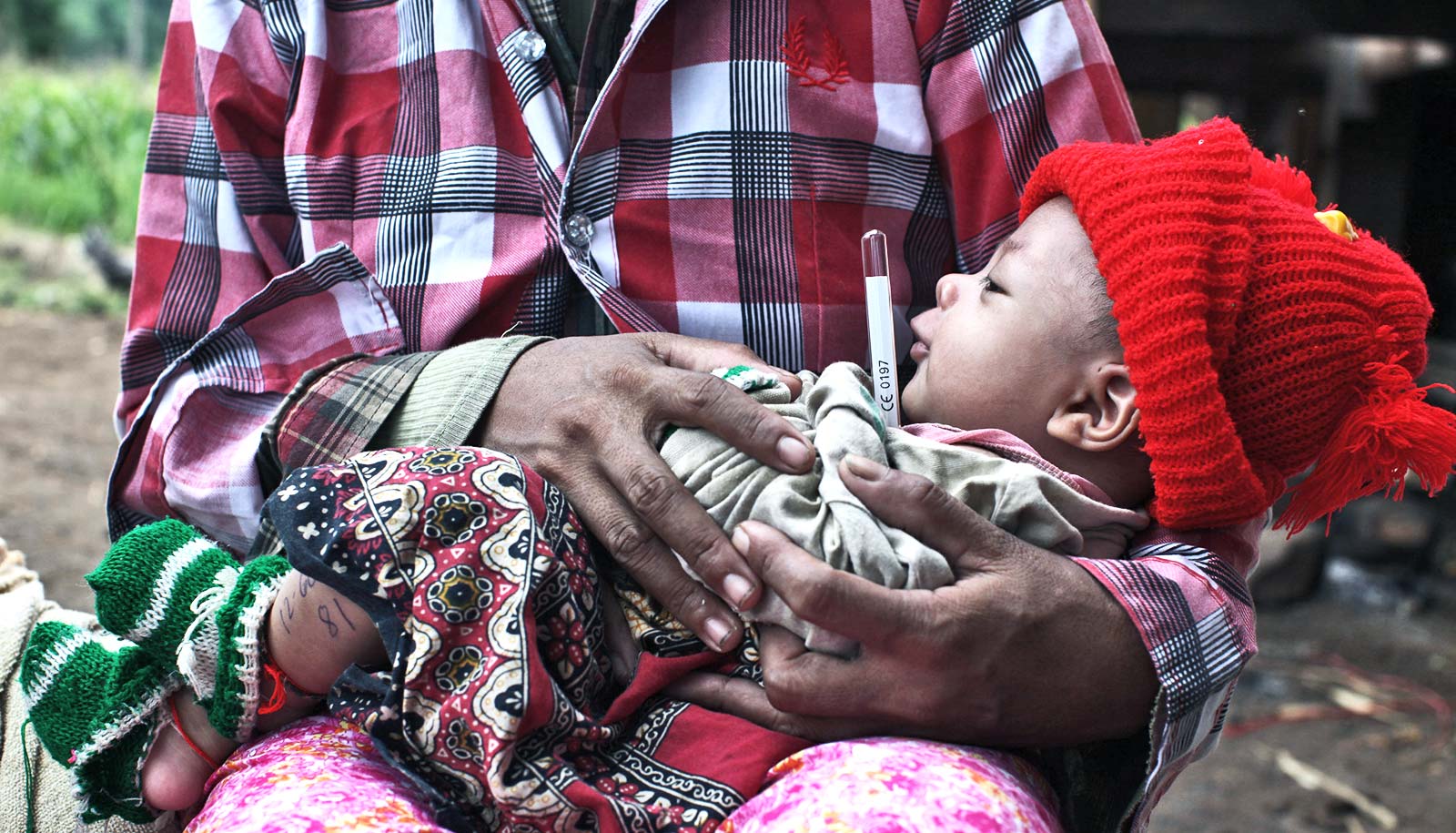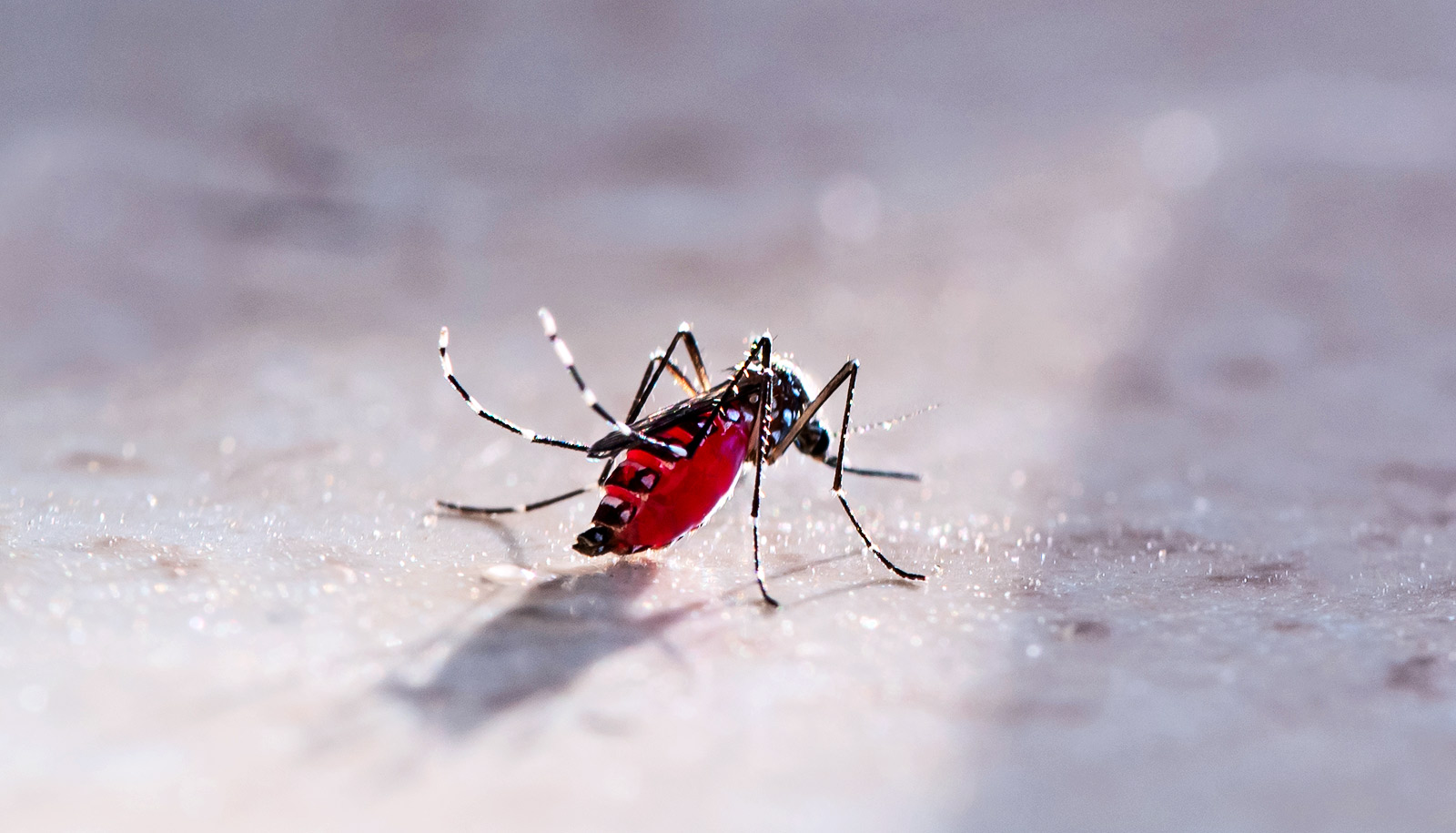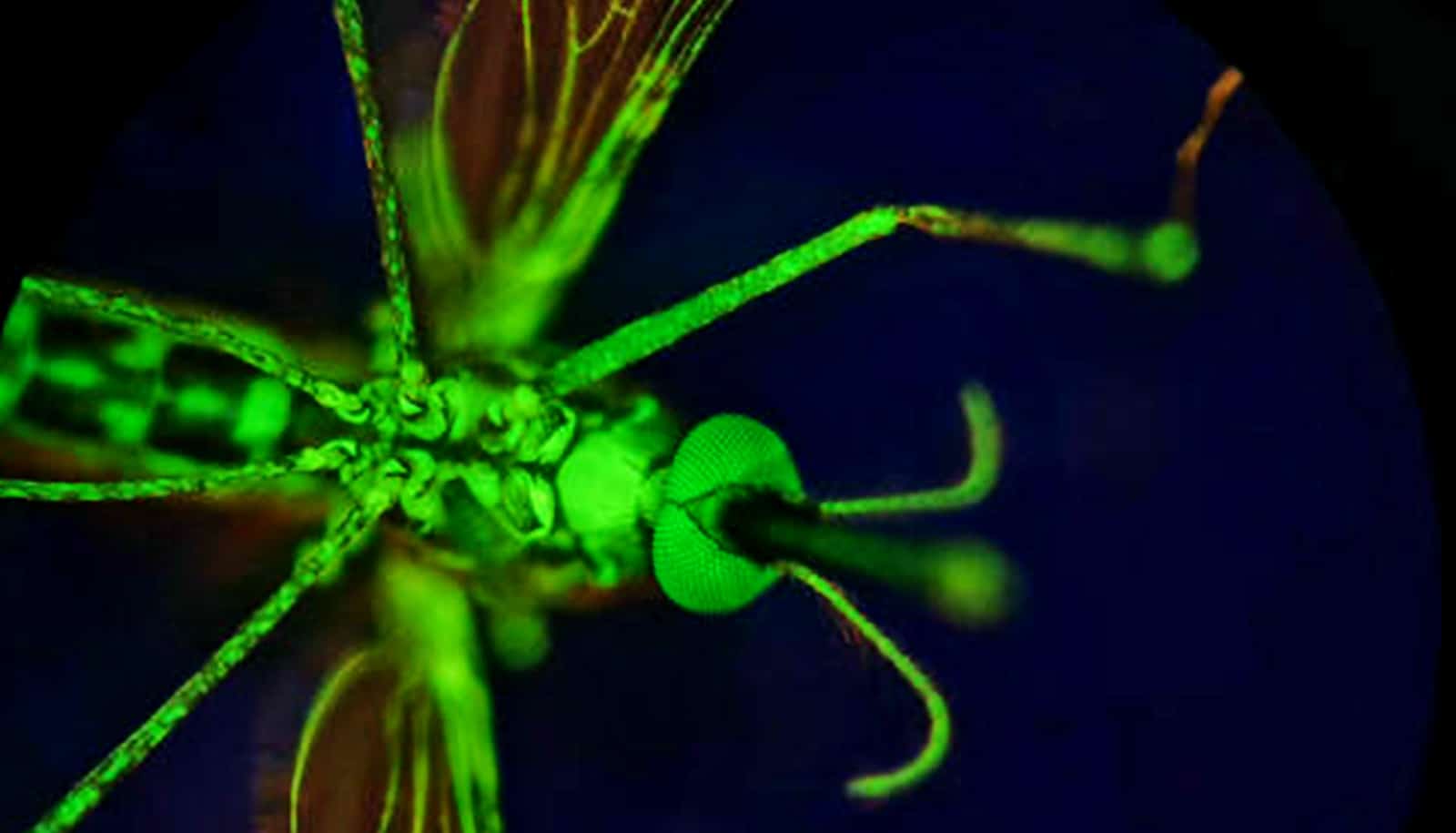The most severe strains of malaria infection are associated with a small group of proteins, according to a new study.
The finding could be a step toward a vaccine against the deadliest forms of the disease.
“The great burden of mortality for malaria is in children under five.”
Not all cases of malaria are the same. There are thousands of different strains—some parasites cause only mild symptoms, while other more severe forms can cause disease and death.
And not all people are the same. Some infected people show no obvious symptoms, while others succumb to a severe and, ultimately, fatal disease. This second group often includes young children who have not yet had a chance to develop a strong immune response to the parasite.
“The great burden of mortality for malaria is in children under five,” says Michael Duffy, a malaria researcher with the School of BioSciences and the Bio21 Institute at the University of Melbourne.
Why are children high risk?
The World Health Organization reported 429,000 malaria deaths in 2015, of which 70 percent were children under the age of 5. Why are children at such high risk of death? And why do some die while others survive?
“We asked ourselves—is it something about the humans or the parasites that results in this difference?” Duffy says. “We think it’s an interplay of both.
“What we think is that the immunologically naïve—that is, people who have never previously been exposed—get infected with these parasites and those parasites that cause severe disease dominate in these early infections. Either you become immune or you die.”
Duffy believes the key to combating the public health challenge is to focus on those people who are most susceptible to severe strains—young children—and focus on those malaria strains that are most likely to cause death.
But how can you tell a deadly strain from a more benign one?
Different malaria strains
Researchers developed a fingerprinting technique to uniquely identify different strains of malaria in a population based on the genes (called var genes) that code for the surface protein PfEMP1. This protein plays a key role in the parasite’s ability to evade our immune systems.
Each parasite contains around 60 versions of the var gene and when in the bloodstream of a host, these genes are expressed one at a time, each time building a new surface protein.
“We won’t eradicate malaria, but we may be able to protect children when they are most vulnerable to death or serious morbidity…”
“So you develop immunity to one protein and you start to kill off the parasites expressing it,” Duffy says. “And then it spontaneously switches to another protein to which you have no immunity.”
A few years ago, researchers discovered there is probably a particular set of PfEMP1 proteins that cause severe disease.
“Once you are immune to them, you are immune to severe disease, but you can still be infected with uncomplicated malaria, or be asymptomatic,” Duffy says.
To test this, researchers used new sequencing and fingerprinting technologies to sample parasites isolated from the blood of 44 adults in a location where malaria is endemic in the state of Papua in Indonesia. Twenty-three people had severe malaria.
Researchers then assembled 4,662 pieces of var genes that were being expressed in these parasites and compared the genes expressed in severe cases against those expressed in mild cases.
They used advanced statistical processing to show that a tiny subset of the thousands of var genes that were present were being expressed at a higher rate in patients with severe malaria than in those with uncomplicated strains.
Other groups have tested patients in India and Africa for known var genes and have found similarly found an association between the expression of certain genes and severe malaria.
However, this test on the Papuan community was the first time the association could be made with all the genes that were present, not just those that were already known about.
“This is the first time anyone has taken the genes that are expressed, sequenced everything that’s there and tried to assemble them, to work out what’s present and what’s different between severe and uncomplicated cases,” Duffy says.
Malaria parasite packs bags to travel from host to host
Incredibly, all the proteins associated with severe malaria in India and Africa were also upregulated (had a heightened response) in the severe cases in Papua, suggesting that this small group of deadly proteins is highly conserved around the world.
Looking forward
With their comprehensive screening technology, the research team also found many severe-malaria-associated proteins that hadn’t been identified elsewhere.
Researchers are now looking to test children in malaria-endemic regions of Africa—the group by far the most at risk from death—to see if the new deadly proteins they found in Papua are also present there.
“We also want to look for serological responses—whether people have antibodies to these proteins in their blood,” Duffy says.
“Are kids with severe infections missing antibodies to these proteins? Do those who don’t get severe infections have them?” A positive result could lead to a solution to the malaria vaccine puzzle.
A broadly effective vaccine remains elusive largely because malaria is so diverse and each parasite is constantly changing its attack strategy, finding a valid target for a vaccine is hard.
“But now we are starting to understand that, of the thousands of versions of the PfEMP1 protein that are out there, only a handful, maybe 20 or 30, are causing the most severe cases of malaria. And so, we might be able to target vaccines to just these severe versions.
“We won’t eradicate malaria, but we may be able to protect children when they are most vulnerable to death or serious morbidity from malaria, and thus greatly reduce the burden of the disease.”
Fight against malaria gets two new weapons
The findings appear in PLOS Biology. Other researchers are from the University of Melbourne; Oxford University; the Walter and Eliza Hall Institute of Medical Research; the Eijkman Institute for Molecular Biology in Jakarta, Indonesia; the Timika Malaria Research Program; Papuan Health and Community Development Foundation, Indonesia; the Peter McCallum Cancer Centre; and Charles Darwin University.
Source: University of Melbourne



